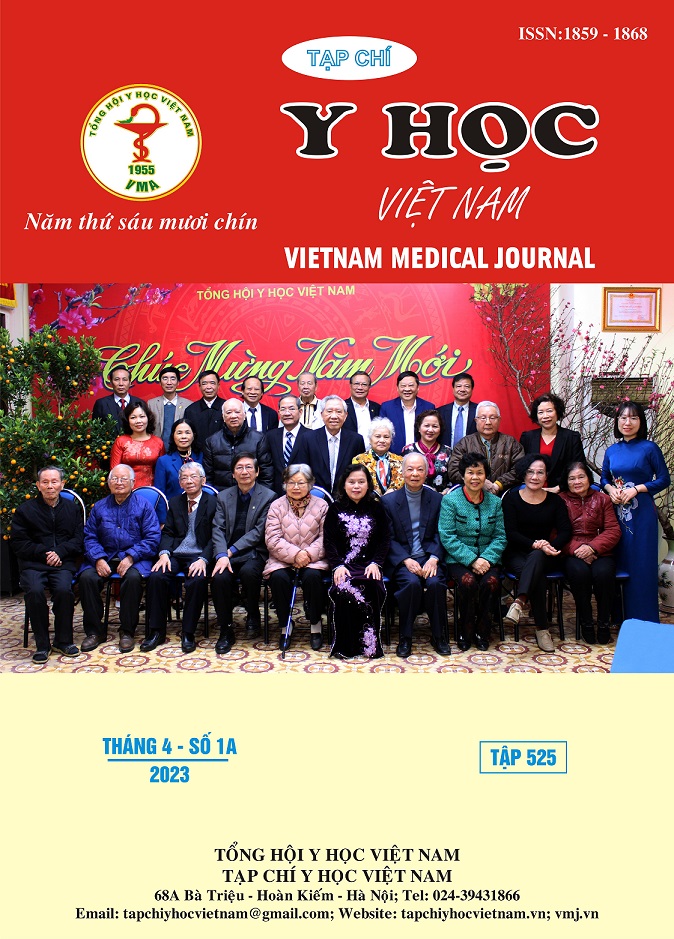EVALUATE THE EFFECT IN PREVENTING VENTILATOR ASSOCIATED PNEUMONIA OF CLOSED SUCTION SYSTEM IN TRAUMATIC BRAIN INJURY PATIENTS
Main Article Content
Abstract
Objective: To evaluate the effect of ventilator-associated pneumonia prevention of closed versus open suction systems in traumatic brain injury patients who underwent machine ventilation. Method: Research method is randomized controlled clinical trial. The participated patients were diagnosed with traumatic brain injury alone, GSC ≤8 points, underwent mechanical ventilation for more than 48 hours with indication for surgery or not, divided into 2 groups. Group 1 was the group of patients using the closed suction system and group 2 was the patients using the open suction system. The participating patients were monitored for ventilator-associated pneumonia daily until weaned the ventilation and discharged from the ICU. Results: In 101 patients participating in the study, 49 patients were installed with an open suction system and 52 patients were installed with a closed suction system. The rate of ventilator-associated pneumonia of the patients participating in the study was 44.5%, of which 55.1% in the open suction group and 34.6% in the closed suction group, the difference between the two groups was statistics significant with p=0.038<0.05. In addition, the closed suction system group also had less mechanical ventilation time and recovery time. There were no differences in the bacteria stain causing ventilator-associated pneumonia in the two groups. Conclusion: The closed suction system helps to reduce the rate of ventilator-associated pneumonia, reduce the number of days of mechanical ventilation and resuscitation.
Article Details
Keywords
Ventilator-associated pneumonia, traumatic brain injury, suction catheter system
References
2. Trịnh Văn Đồng. Nghiên cứu nhiễm khuẩn hô hấp ở bệnh nhân chấn thương sọ não phải thở máy. Luận Án Tiến Sĩ Học- Bộ Tế. Published online 2004.
3. American Association for Respiratory Care. AARC Clinical Practice Guidelines. Endotracheal suctioning of mechanically ventilated patients with artificial airways 2010. Respir Care. 2010;55(6):758-764.
4. David D, Samuel P, David T, Keshava SN, Irodi A, Peter JV. An open-labelled randomized controlled trial comparing costs and clinical outcomes of open endotracheal suctioning with closed endotracheal suctioning in mechanically ventilated medical intensive care patients. J Crit Care. 2011;26(5):482-488.
5. Heyland DK, Cook DJ, Griffith L, Keenan SP, Brun-Buisson C. The attributable morbidity and mortality of ventilator-associated pneumonia in the critically ill patient. Am J Respir Crit Care Med. 1999;159(4):1249-1256.
6. Fox MY. Toward a zero VAP rate: personal and team approaches in the ICU. Crit Care Nurs Q. 2006;29(2):108-114.
7. Combes P, Fauvage B, Oleyer C. Nosocomial pneumonia in mechanically ventilated patients, a prospective randomised evaluation of the Stericath closed suctioning system. Intensive Care Med. 2000;26(7):878-882.
8. Lorente L, Lecuona M, Jiménez A, Mora ML, Sierra A. Tracheal suction by closed system without daily change versus open system. Intensive Care Med. 2006;32(4):538-544.
9. Siempos II, Vardakas KZ, Falagas ME. Closed Tracheal Suction Systems for Prevention of Ventilator-Associated Pneumonia. Centre for Reviews and Dissemination (UK); 2008. Accessed October 5, 2022. https:// www.ncbi.nlm.nih.gov/books/NBK75705/
10. Elmansoury A, Said H. Closed suction system versus open suction. Egypt J Chest Dis Tuberc. 2016;66(3). Accessed October 5, 2022. https://cyberleninka.org/article/n/1472491


